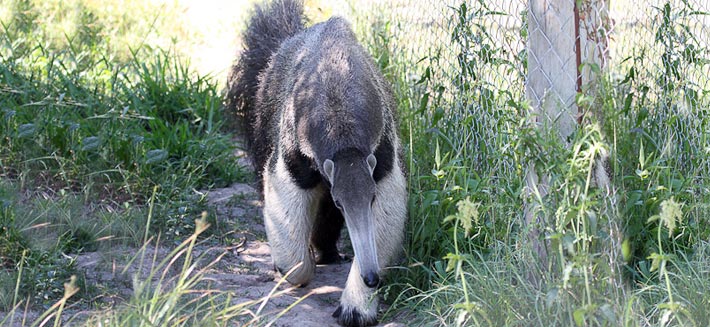
Strange Tails
We're delighted to have a strong population of strange-tailed tyrants at the reserve. So much so that we've adopted these beautiful and endangered birds as the symbol of the Trust
The growing diversity of the animals of Reserva Don Luis is a fresh source of delight every time we return. We don't play favourites, but it's impossible not to engage more with some of our more conspicuous guests. One of these is the strange-tailed tyrant. The male is stoic in his tolerance of one of nature's strangest - and it would seem least practical - adaptations. He's willing to suffer to be beautiful, and somehow manages to fly with tail feathers that were surely designed for a bird three times his size.
We love his perseverance; his resolution to succeed against challenge, and his ability to prove that anything is possible. He's appearing in growing numbers on the Reserva Do Luis, and his success has become an allegory for, and a symbol of, our own.
When we started the process of updating and redesigning our website, we wanted to adopt an image that symbolised our aims and our challenges. This brave little flycatcher, with his indomitable character, was the perfect choice.
The logo is a stylised profile of a male tyrant, silhouetted against the sunrise. We coloured the sun the blue of the Argentinian flag in honour of this country's beauty, its climate and the breathtaking span of magnificent animals that it nurtures.

Bat Research
Our bat team is conducting bat research both in the Ibera Marshes and in other provinces. We are especially concentrating on Misiones at the moment where we find the largest bat in Argentina, Chrotopterus auriitus and Myotis ruber, two species that we are researching.

Giant Anteater
Mymecophaga tridactyla
The Giant Anteater was once common in Corrientes now it is extinct in that area mainly due to the invasion of cattle ranchers with dogs. The dogs which accompany the gauchos attack the Anteaters which are gentle passive creatures but will defend themselves and their young if necessary. They can even defend themselves against the Jaguar or Puma. Sometimes they can kill a dog which means they become a marked animal and the gauchos will pursue and kill the anteater in revenge. Often the females are carrying a juvenile on their backs and these are either sold into the pet trade or just left to die.
Thanks to CLT there are now over 100 Giant Anteaters which have been reintroduced to a safe conservation area of the esteros. They are being monitored carefully by biologists and volunteers and some have radio collars to enable tracking.
They are the largest of the anteaters and the only species in the genus 'mymecophaga'. They have no teeth and a very low metabolism and body temperature. They have an excellent sense of smell, poor eyesight and hearing is debateable. In my experience they have quite good hearing as they always detected us when we tracked them to within 10 metres or so even though we invariably approached downwind.
They are solitary and only come together with another anteater to mate. Their size is comparable to a Labrador dog with a tail almost as long as the body length which they use to cover their bodies whilst sleeping, presumably to keep warm. Data suggests that they are nocturnal during the summer and diurnal during the winter - at least in the area of Corrientes. This is probably due to their low tolerance of temperature extremes. They use their long narrow tongue (length up to 60cm) to probe anthills and termite hills and devour the insects. This normally lasts up to 2 minutes per anthill after which they move on to the next one partially to conserve their food store and partially in order to avoid the soldier ants which will have assembled by this time.
The female bears one offspring which has a weaning time of about 6 months but will stay with its mother for up to a year.

